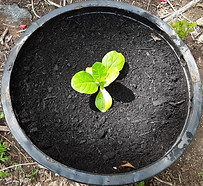top of page
Arrowhead Farm

In 2017, the Eastern Connecticut Community Garden Association helped the tribe return to gardening in order to provide education and sustenance for those in need. As the tribe only had four raised beds and two in-ground beds, it needed to expand to provide more. In the winter of 2020-21, Hull Forestry and Woodland Management Services cleared 4 acres of land. It was a necessity to clear trees and vegetation to allow light and space, since the reservation's location is in New England's Eastern Woodlands.
Please consider donating to this cause. Your donation will help preserve a native tribe which fought hard to survive through first contact, colonialism, and now economic and nutritional hardship.
Gallery
History
bottom of page















